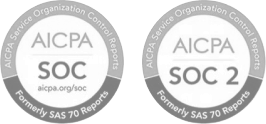1099 Form
Article Navigation
The Form 1099 is a series of informational tax forms used in the United States to report various types of income other than wages, salaries, and tips. These forms are issued by payers—such as businesses, financial institutions, and government entities—to the Internal Revenue Service (IRS) and to recipients who earned income in a non-employee capacity. The 1099 tax form is an essential compliance tool that ensures accurate reporting and taxation of income not captured through standard payroll systems.
Who Uses Form 1099
Form 1099 is most commonly associated with independent contractors, freelancers, and gig economy workers who receive payment for services but are not classified as employees. Businesses are required to issue a 1099-NEC (Nonemployee Compensation) if they pay a non-employee $600 or more in a calendar year. However, the 1099 series covers far more than just contractor income.
Common Types of Form 1099
There are multiple variations of Form 1099, each designated for different types of reportable income. The most relevant include:
- 1099-NEC (Nonemployee Compensation): Reintroduced in 2020, this form is issued to independent contractors, freelancers, and vendors who are paid $600 or more in services during the tax year. Replaces Box 7 of the old 1099-MISC.
- 1099-MISC (Miscellaneous Income): Now used to report rent, prizes, awards, legal services, and other miscellaneous income types not covered by 1099-NEC.
- 1099-INT: Reports interest income from banks, credit unions, or investment accounts totaling $10 or more.
- 1099-DIV: Reports dividends and capital gains distributions.
- 1099-B: Used by brokers to report proceeds from securities transactions.
- 1099-R: Reports distributions from retirement plans, pensions, IRAs, and annuities.
- 1099-G: Issued by government agencies to report unemployment compensation, state tax refunds, or agricultural payments.
- 1099-K: Issued by third-party payment processors (e.g., PayPal, Stripe) for business transactions exceeding IRS thresholds (currently $600 in many states, previously $20,000 and 200 transactions federally).
1099 for Independent Contractors
Independent contractors and self-employed individuals receive a 1099-NEC form if they provide services to a business and meet the payment threshold. Unlike employees, these workers do not have federal income tax, Social Security, or Medicare withheld from their compensation. Instead, they are responsible for reporting their income on Schedule C of Form 1040 and paying self-employment taxes via Schedule SE.
Contractors must ensure all 1099-NEC forms received are accurate, as the IRS also receives copies and uses them to verify reported income. Inaccuracies or underreporting can lead to audits, penalties, and interest.
Filing and Deadlines
- Businesses must send copies of the appropriate 1099 form to recipients by January 31 of the year following payment.
- A copy must be filed with the IRS, typically by January 31 (for 1099-NEC) or February 28 (paper)/March 31 (electronic) for other types.
- Form 1096 may be required if filing paper copies with the IRS.
- Penalties may apply for late, inaccurate, or omitted filings.
Exemptions and Exceptions
Not all payments require a 1099. Exceptions include:
- Payments made to corporations (with some exceptions, such as legal services).
- Payments for merchandise, storage, or freight.
- Wages paid to employees (which are reported on Form W-2).
- Transactions made via credit card or third-party networks (reported on 1099-K).
Form 1099 vs. W-2
The key distinction lies in worker classification. Form W-2 is used for employees and includes tax withholdings, while Form 1099 is for non-employees. Misclassification of employees as contractors can result in legal and financial penalties under IRS and Department of Labor regulations.
IRS Matching and Compliance
The IRS uses automated matching systems to compare 1099 data submitted by payers against income reported by recipients. Discrepancies trigger compliance notices or audits. Contractors are advised to track all income, even if a 1099 form is not issued, as they are legally required to report total earnings.
Conclusion
The 1099 form serves as a critical tool in the IRS’s effort to monitor taxable income outside the traditional payroll system. Whether used for reporting payments to independent contractors, interest, dividends, or digital transactions, Form 1099 ensures that non-wage income is captured, taxed appropriately, and transparent for both payers and recipients. Businesses must remain vigilant in issuing accurate forms on time, while recipients must report all 1099 income to stay compliant with federal tax law.































 Back
Back